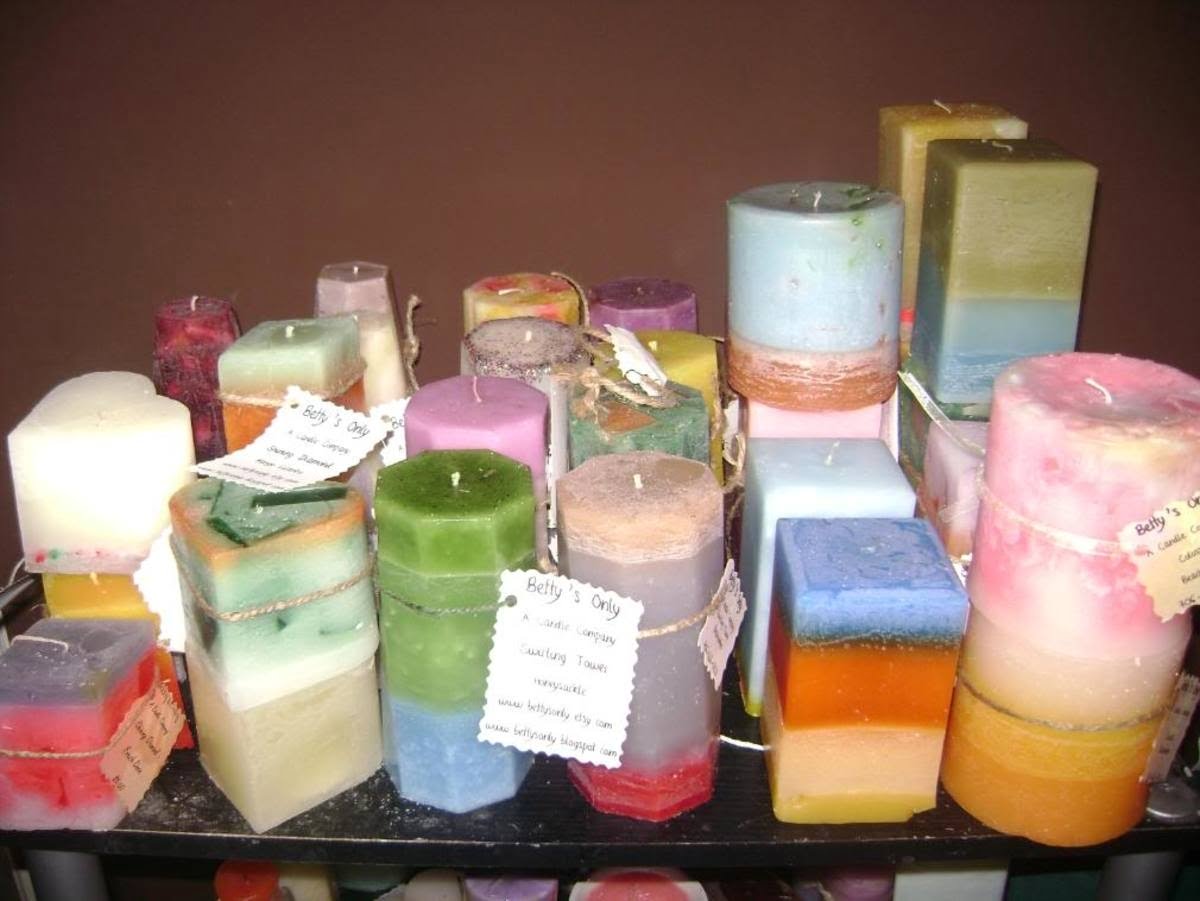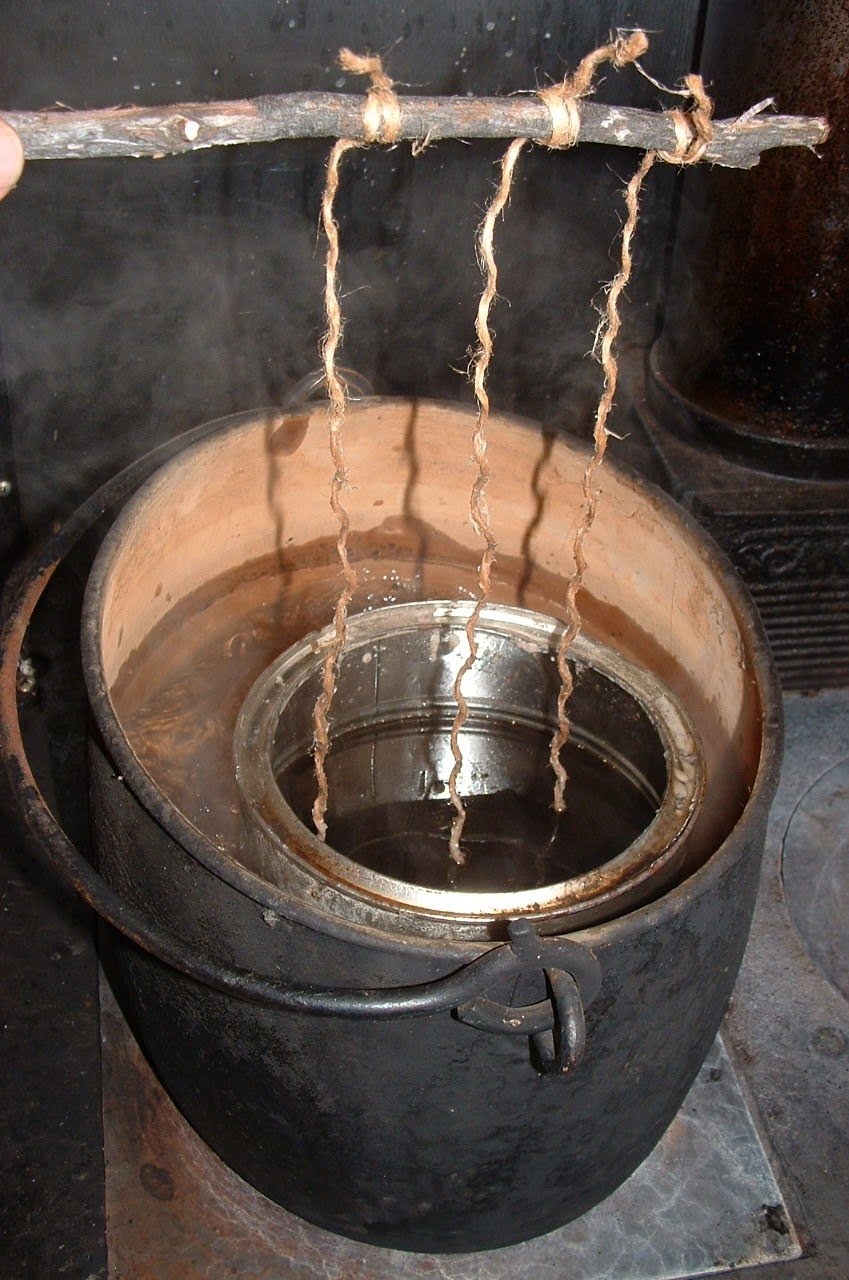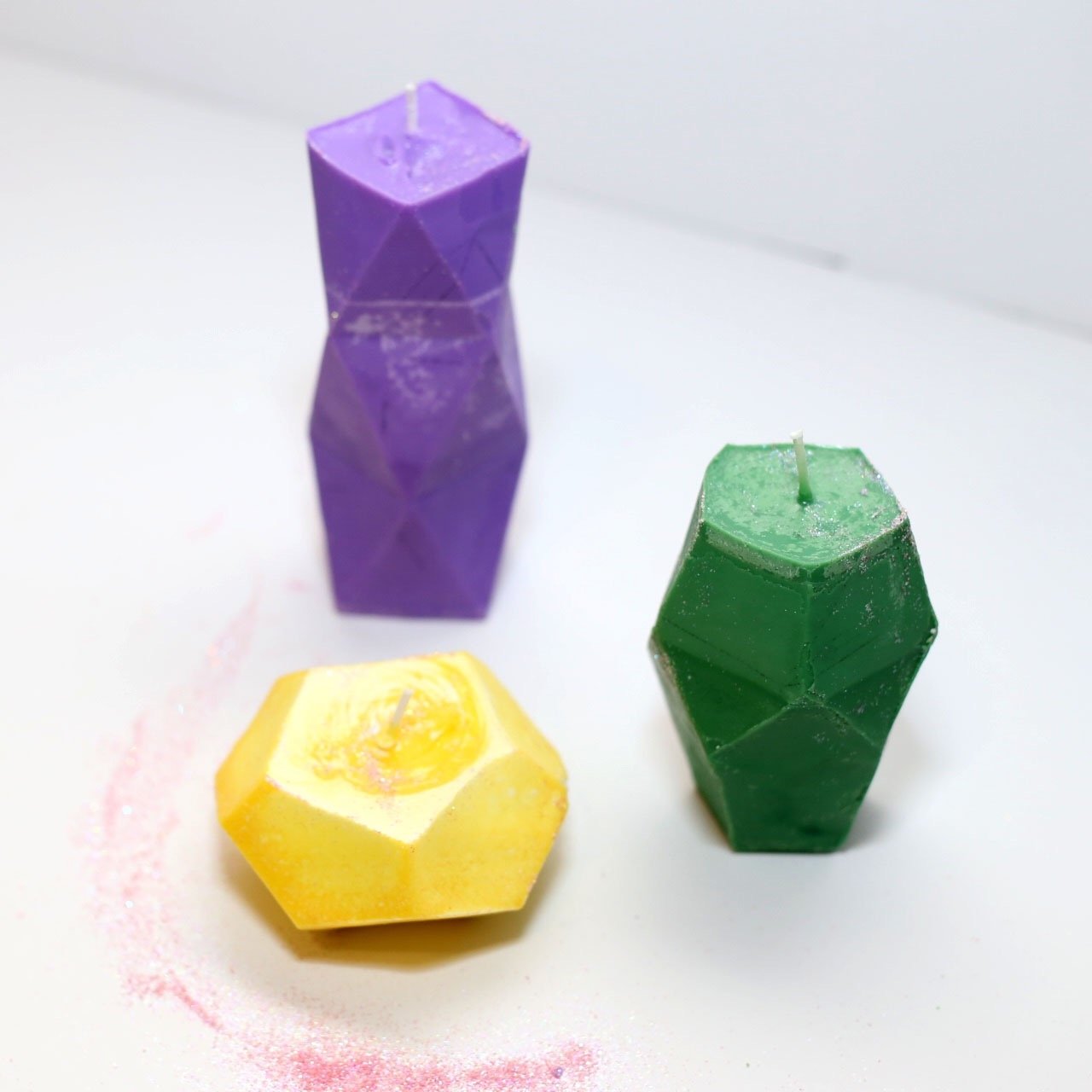Candle making is a beloved hobby for many, as well as a profitable business venture for others. Regardless of the purpose behind your candle-making pursuits, one thing is certain: cleaning your candle making tools is essential.
Just like any other craft or trade, proper maintenance and cleanliness are crucial in ensuring the longevity and quality of your creations. In this article, we will explore the importance of cleaning candle making tools and provide you with a step-by-step guide to effectively clean various types of tools used in the process.
When it comes to creating candles, there are numerous tools involved that require regular cleaning. From pouring pots and pitchers to wick trimmers and cutters, each tool plays an integral role in producing beautiful and functional candles. Neglecting to clean these tools can result in unwanted wax buildup, contamination, and even poor-quality candles.
Cleaning candle making tools not only helps maintain a sanitary work environment but also ensures that your equipment remains in optimal condition. A dirty tool can hinder the effectiveness of tasks such as pouring hot wax into molds or trimming wicks accurately. By adopting proper cleaning techniques and regularly maintaining your tools, you can extend their lifespan while preventing potential issues down the line.
In the upcoming sections of this article, we will delve into specific types of candle-making tools and outline step-by-step guides for their proper cleaning methods. We will explore how to clean pouring pots and pitchers, maintain wick trimmers and cutters, safely handle thermometer cleaning, deep clean molds and containers, remove stubborn wax residue effectively, practice general tool maintenance best practices, and more.
By following these guidelines diligently, you can ensure that your candle-making journey is smooth sailing filled with exquisite scents and aesthetically pleasing results.
Celebrate the artistry that comes with candle making by keeping your tools pristine through regular cleaning. Not only will cleanliness promote a safer working environment but also enhance the overall quality of your creations. Join us as we embark on an exploration of the different types of candle making tools, their cleaning requirements, and the best practices to maintain cleanliness and longevity. Let’s get started on the path to spotless candle making tools.
Understanding Different Types of Candle Making Tools
When it comes to candle making, there are various tools that are essential for creating beautiful and high-quality candles. Understanding the different types of candle making tools is crucial for effectively cleaning them. Here, we will explore some of the most common candle making tools and their functions.
- Candle Pouring Pots and Pitchers Candle pouring pots and pitchers are specifically designed to hold melted wax and pour it into molds or containers. They come in different sizes, with larger ones used for bigger projects. These tools typically have long handles to prevent burns while pouring hot wax. Cleaning these tools is important to remove any leftover wax residue and ensure a clean start for your next candle-making session.
- Wick Trimmers and Cutters Wick trimmers and cutters are used to trim the wicks of candles to the desired length before lighting them. Trimming the wick helps the flame burn properly, reducing soot and ensuring a steady, even burn throughout the candle’s lifespan. Regular cleaning of wick trimmers and cutters is necessary to prevent any buildup of burnt wick debris that can affect future trims.
- Candle-Making Thermometers and Testers Thermometers and testers are vital tools in candle making as they help ensure safety during the melting, pouring, and curing process. Thermometers are used to monitor the temperature of the wax, while testers check if the wax has reached its desired consistency for pouring into molds or containers. Cleaning these tools is crucial for accurate readings and reliable results.
- Candle Molds and Containers Candle molds come in various shapes, sizes, and materials (e.g., metal, silicone), allowing you to create candles in different designs. Containers, on the other hand, provide a ready-made vessel for pouring melted wax into without using a separate mold. Properly cleaning candle molds and containers after each use not only removes any wax residue but also helps maintain their durability and longevity.
By understanding the different types of candle making tools and their functions, you can better appreciate the importance of keeping them clean. In the next sections, we will delve into the step-by-step guide for cleaning specific tools as well as provide tips for troubleshooting stubborn wax residue and maintaining proper tool hygiene.
Preparing for the Cleaning Process
When it comes to cleaning candle making tools, gathering the necessary supplies is an important step in ensuring a thorough and efficient cleaning process. Having the right tools at hand will make the task much easier and more effective. Here are some essential supplies you will need before you begin cleaning your candle making tools:
- Soap or detergent: Choose a gentle dish soap or detergent that is suitable for cleaning various materials such as metal, glass, and plastic. Avoid using harsh chemicals that may damage your tools.
- Hot water: Hot water is essential for removing wax residue from your tools. Fill a sink or basin with hot water to soak and clean your tools.
- Soft-bristled brush: A soft-bristled brush is useful for scrubbing away stubborn wax buildup on candle pouring pots, pitchers, molds, and containers.
- Paper towels or lint-free cloth: These are handy for wiping down your cleaned tools and drying them thoroughly after washing.
- Rubber gloves: Protect your hands from hot water and potential skin irritants by wearing rubber gloves during the cleaning process.
- Safety goggles: When working with chemical cleaners or scraping off wax residue, it’s crucial to protect your eyes by wearing safety goggles.
- Cotton swabs or toothpicks: These small tools are great for detailed cleaning of hard-to-reach areas like crevices in wick trimmers and cutters.
- Vinegar or rubbing alcohol: Both vinegar and rubbing alcohol can help remove stubborn wax residue if traditional soap and water don’t do the trick.
- Plastic scraper or spoon: Use a plastic scraper or spoon to gently scrape off excess wax from tools like thermometers, testers, or any other tool with narrow openings.
- Storage container: After cleaning your candle making tools, it’s important to have a designated storage container where they can be kept clean and organized until their next use.
By gathering these necessary supplies before starting the cleaning process, you’ll be well-equipped to efficiently and effectively clean your candle making tools. Remember to always follow safety guidelines and manufacturer’s instructions when using any cleaning product or tool.
Step-by-Step Guide
Pouring pots and pitchers are essential tools for candle making, as they are used to melt and pour the wax into molds or containers. Over time, residue from the melted wax can build up on these tools, affecting the quality of your candles. Regular cleaning is necessary to ensure that your pouring pots and pitchers remain in good condition and produce high-quality candles.
To clean pouring pots and pitchers, follow these step-by-step instructions:
- Remove any leftover wax: Before cleaning your pouring pot or pitcher, remove any leftover wax by gently scraping it off with a plastic spatula or spoon. Be careful not to scratch the surface of the tool.
- Heat up some water: Fill a sink or a large basin with hot water. The water should be hot enough to melt any remaining wax residue but not boiling.
- Dissolve the wax: Place the pouring pot or pitcher in the hot water and let it sit for a few minutes to allow the residual wax to dissolve. You can gently swirl it around in the water to help speed up the process.
- Scrub away residue: After soaking, use a soft sponge or cloth to scrub away any remaining residue inside and outside of the pouring pot or pitcher. Pay extra attention to areas where build-up is most common, such as around the rim and spout.
- Rinse thoroughly: Once you have removed all traces of wax residue, rinse the pouring pot or pitcher under running water until all soap residue is gone.
- Dry completely: Finally, make sure your pouring pot or pitcher is completely dry before storing it away for future use. Leaving any moisture behind can lead to mold growth or rust.
By following these step-by-step instructions, you can effectively clean your candle pouring pots and pitchers, ensuring that they remain free from excessive buildup and ready for use in your next candle-making project.
Materials needed
- Plastic spatula or spoon
- Hot water
- Soft sponge or cloth
- Mild dish soap (optional)
Tips
- If there is stubborn wax residue that does not dissolve in hot water, try gently heating the pot or pitcher with a hairdryer to melt it.
- Avoid using harsh chemicals or abrasives to clean your pouring pots and pitchers, as they can damage the surface and affect the quality of your candles.
- Regular cleaning after each use will help prevent the wax from building up and make the cleaning process easier.
Proper Maintenance and Cleaning Techniques for Wick Trimmers and Cutters
Wick trimmers and cutters are essential tools for candle makers, as they help maintain the optimal length of the wick for a clean and even burn. To ensure the longevity and effectiveness of these tools, proper maintenance and regular cleaning are necessary. Here are some techniques to keep your wick trimmers and cutters in excellent condition.
Firstly, it is important to remove any leftover wick trimmings or debris from the tool after each use. This can be done by gently tapping or shaking the tool over a trash bin. Alternatively, you can use a soft brush or toothbrush to sweep away any remaining residue.
To remove any wax buildup on the blades, dip a cloth or paper towel in rubbing alcohol and gently wipe down the blades. The alcohol helps dissolve the wax without causing damage to the tool. For stubborn wax residue, you can use a cotton swab dipped in rubbing alcohol to carefully clean hard-to-reach areas.
Regular lubrication of the hinge mechanism is also crucial for smooth operation. Apply a small amount of oil or lubricant specially designed for metal tools onto the pivot point or joint of the trimmers/cutters. Be sure to wipe off any excessive oil before using them again.
| Cleaning Technique | Description |
|---|---|
| Removing leftover debris | Gently tap or shake over a trash bin; use brush if necessary |
| Cleaning wax buildup | Wipe down blades with cloth/paper towel soaked in rubbing alcohol; use cotton swab for stubborn residue |
| Lubricating hinge mechanism | Apply small amount of oil or lubricant designed for metal tools; wipe off excess before use |
Safely Cleaning Candle-Making Thermometers and Testers
Thermometers and testers are essential tools for candle making, as they help monitor and maintain the right temperature throughout the process. However, these tools can get dirty and covered in wax residue over time, which can affect their accuracy and functionality. Therefore, it is crucial to clean and maintain candle-making thermometers and testers regularly.
To safely clean candle-making thermometers and testers, follow these steps:
- Gather necessary supplies: Before cleaning your thermometer or tester, make sure you have all the required supplies on hand. You will need warm water, mild soap or dish detergent, a soft cloth or sponge, and cotton swabs.
- Remove excess wax: Start by gently removing any excess wax from the thermometer or tester using a cotton swab or soft cloth. Be careful not to scratch or damage the instrument while doing this.
- Wash with mild soap: Fill a sink or basin with warm water and add a small amount of mild soap or dish detergent. Submerge the thermometer or tester into the soapy water carefully, ensuring that any electronic components are not submerged if applicable.
- Gently clean: Use a soft cloth or sponge to gently clean the surface of the thermometer or tester in circular motions. Pay special attention to any areas with residue or build-up.
- Rinse thoroughly: Once you have cleaned the instrument thoroughly, rinse it under warm running water to remove any remaining soap residue.
- Dry properly: After rinsing, pat dry the thermometer or tester using a clean towel to remove excess moisture. Allow it to air dry completely before storing it away.
By following these steps regularly, you can keep your candle-making thermometers and testers in excellent condition for accurate temperature readings during every candle-making session.
Deep Cleaning Candle Molds and Containers
Candle molds and containers are essential tools in the candle making process, as they determine the shape and design of the final product. However, over time, these tools can accumulate wax residue and become dirty, which can affect the quality of your candles. Deep cleaning your candle molds and containers regularly is important to maintain cleanliness and ensure consistent results.
Supplies Needed
Before you begin deep cleaning your candle molds and containers, gather the necessary supplies. You will need a large pot or bucket that is big enough to submerge your molds or containers in, hot water, dish soap or a mild detergent, a soft sponge or brush for scrubbing, and a microfiber cloth or towel for drying.
Cleaning Process
To deep clean your candle molds and containers, start by filling the pot or bucket with hot water. Add a few drops of dish soap or mild detergent to create a soapy solution. Submerge the molds or containers into the soapy water and let them soak for about 15-20 minutes to loosen any wax residue.
After soaking, use the soft sponge or brush to gently scrub away any remaining wax residue on the surfaces of the molds or containers. Pay extra attention to crevices or hard-to-reach areas where wax buildup may be more stubborn. Rinse off the soap residue with warm water until the molds or containers are clean.
Once clean, use a microfiber cloth or towel to dry the molds or containers thoroughly. Ensure that there is no moisture left behind as it may lead to mold growth when storing them.
Special Considerations
It is important to note that not all types of candle molds and containers can be submerged in water due to their materials. Some may be made of porous materials such as wood or ceramic that can absorb water and warp. In such cases, it is recommended to use a dry cleaning method instead.
Furthermore, for candle molds with intricate designs or with multiple parts such as silicone molds or two-piece molds, it is crucial to disassemble them before cleaning. This will allow you to clean each part thoroughly and ensure that no residue is left behind.
By regularly deep cleaning your candle molds and containers, you can maintain their cleanliness, prolong their lifespan, and produce high-quality candles consistently.
Dealing with Stubborn Wax Residue
One common issue that candle makers often face is the buildup of wax residue on their tools. Over time, wax can accumulate on pouring pots, pitchers, and various other candle-making utensils, making them sticky and difficult to work with. Fortunately, there are several effective methods for removing wax buildup and restoring these tools to their original condition.
One simple yet effective method for removing wax residue is by using hot water. Start by filling a sink or basin with hot water and allowing the tools to soak for several minutes. The heat will soften the wax, making it easier to remove. After soaking, use a sponge or cloth to scrub away the softened wax. For stubborn residue, a plastic scraper or old credit card can be used to gently scrape off any remaining wax.
Another method that can be employed is the use of heat. This technique involves gently heating the affected tool with a hairdryer or heat gun until the wax softens. Once softened, wipe away the excess wax using a soft cloth or paper towel. Be cautious not to overheat the tool, as this can cause damage.
In some cases, stubborn wax residue may require additional assistance from cleaning agents such as rubbing alcohol or vinegar. To use rubbing alcohol, simply moisten a cloth or paper towel with alcohol and rub it onto the waxy surface until it dissolves. Vinegar can also be employed in a similar manner; however, it may require longer soaking times due to its milder effect.
By following these tips and techniques for removing wax buildup, candle makers can ensure that their tools remain clean and in good condition for future use. Regularly addressing this issue will not only make candle making easier but also help maintain tool longevity and ultimately contribute to producing high-quality candles each time.
Maintaining Cleanliness
Regular maintenance and cleanliness of candle making tools play a crucial role in ensuring the longevity and quality of your candles. Dirty or poorly maintained tools can lead to subpar results, a waste of materials, and even safety hazards. In this section, we will explore some best practices and tips for maintaining the cleanliness of your candle making tools.
One important tip for regular tool maintenance is to clean them immediately after each use. This prevents wax residue from hardening and becoming difficult to remove later on. To clean pouring pots and pitchers, start by scraping out any excess wax with a plastic scraper or spatula.
Next, fill the pot or pitcher with hot water and add a few drops of dishwashing liquid. Let it sit for a few minutes to loosen any remaining wax, then scrub the interior with a non-abrasive brush or sponge. Rinse thoroughly with hot water and dry before storing.
Wick trimmers and cutters are essential tools for maintaining proper wick length in candles. To clean these tools, wipe off any debris or wax residue with a soft cloth or tissue after each use. If there is stubborn residue, dip a cotton ball in rubbing alcohol and gently rub the affected areas. Be sure to dry them thoroughly before using them again.
Candle-making thermometers and testers are vital for achieving optimal temperature control during the candle-making process. To clean these instruments, start by soaking them in warm soapy water for several minutes to soften any residual wax. Gently scrub with a soft-bristle brush or sponge to remove any remaining debris. Rinse well with water and dry completely before storage.
By following these best practices and tips for regular tool maintenance, you can ensure that your candle making tools remain clean, functional, and safe to use over an extended period of time. Regular cleaning not only improves the lifespan of your equipment but also ensures that every candle you create is of high quality.
Conclusion
In conclusion, keeping candle making tools clean and well-maintained is crucial for ensuring longevity and quality in your candle making process. By regularly cleaning and maintaining your tools, you can prevent wax buildup, residue, and contamination that could affect the quality of your candles.
One important aspect of tool maintenance is understanding the different types of candle making tools and their specific cleaning requirements. From pouring pots and pitchers to wick trimmers and cutters, each tool may require different methods of cleaning to remove wax residue effectively. Additionally, thermometers and testers should be safely cleaned to ensure accurate temperature readings during the candle-making process.
To maintain cleanliness in your candle molds and containers, it is essential to deep clean them periodically. This helps remove any lingering wax or residue that can affect the shape or appearance of your candles. By following proper cleaning techniques and using appropriate supplies for each type of tool, you can keep your equipment in optimal condition.
Lastly, regular maintenance and best practices play a vital role in keeping your candle making tools clean over time. It is important to follow good hygiene practices such as washing hands before handling tools, storing them properly when not in use, and avoiding cross-contamination between different fragrances or dyes. By consistently maintaining cleanliness in your workspace and tools, you can create beautiful candles with high quality.
Frequently Asked Questions
How do you clean a wax candle maker?
Cleaning a wax candle maker can be done by following a few simple steps. Firstly, make sure the machine is turned off and unplugged to ensure safety. Then, scrape off any excess or leftover wax using a plastic scraper or spatula. Be careful not to scratch the surface of the machine while doing this.
Next, use a damp cloth or sponge soaked in warm soapy water to wipe down the interior and exterior of the candle maker. Pay attention to any areas that may have accumulated wax residue, such as crevices or corners. Rinse the cloth or sponge frequently and continue wiping until all traces of wax are removed. Finally, dry the machine thoroughly before using it again.
How do you remove candle wax from steel utensils?
Removing candle wax from steel utensils requires a bit of patience and gentle handling to avoid scratching or damaging the surface. Start by letting the wax cool completely, as trying to remove hot wax can be dangerous. Once cooled, carefully scrape off as much wax as possible using a plastic scraper or your fingernail, being cautious not to scratch the steel surface. Next, fill a bowl with hot water and add some dish soap to create a soapy solution.
Place the utensils in the bowl, allowing them to soak for several minutes. After soaking, use a soft sponge or cloth to gently scrub away any remaining wax residue from both sides of the utensils. Rinse thoroughly with warm water and dry with a towel.
How do you remove wax from candle sticks?
To remove wax from candlesticks, it’s important to work carefully in order to avoid causing damage to delicate materials such as glass or metal finishes. Begin by placing the candlestick in your freezer for at least an hour – this will cause the wax to become brittle and easier to remove without spreading further on surfaces or making stains worse. Once frozen, take it out and gently scrape off as much of the hardened wax as possible using a plastic scraper or your fingernail; avoid using anything that could scratch the surface. If there is still wax residue, you can use a hairdryer on low heat to melt the remaining wax.
Hold the hairdryer a few inches away from the candlestick and direct the warm air towards the affected areas until the wax softens, being cautious not to overheat fragile materials. Once softened, wipe away the melted wax with a clean cloth or paper towel. Repeat these steps if needed, always ensuring that any residual heat has dissipated before touching or attempting to clean the candlestick further.

Welcome to my candle making blog! In this blog, I will be sharing my tips and tricks for making candles. I will also be sharing some of my favorite recipes.





